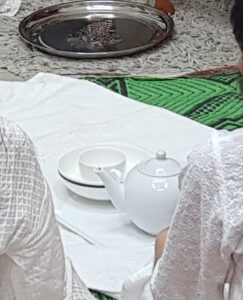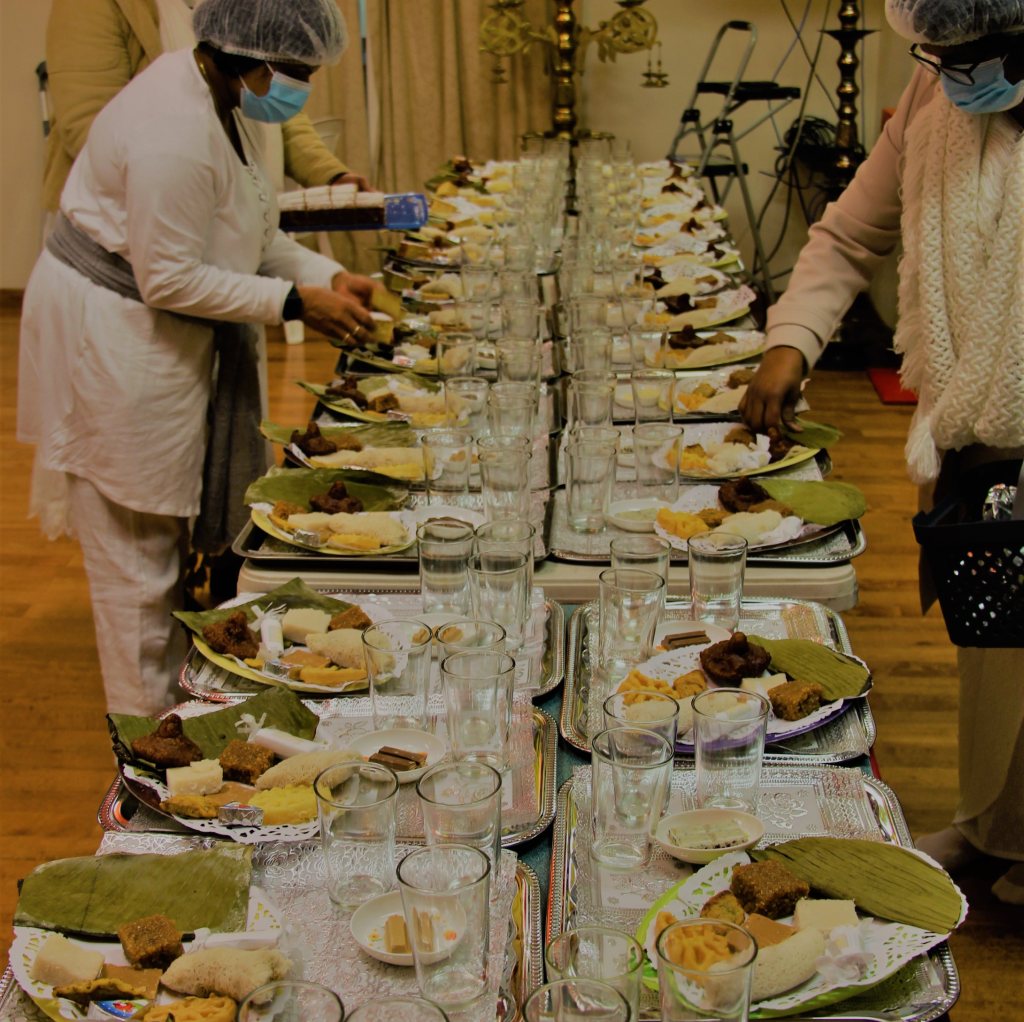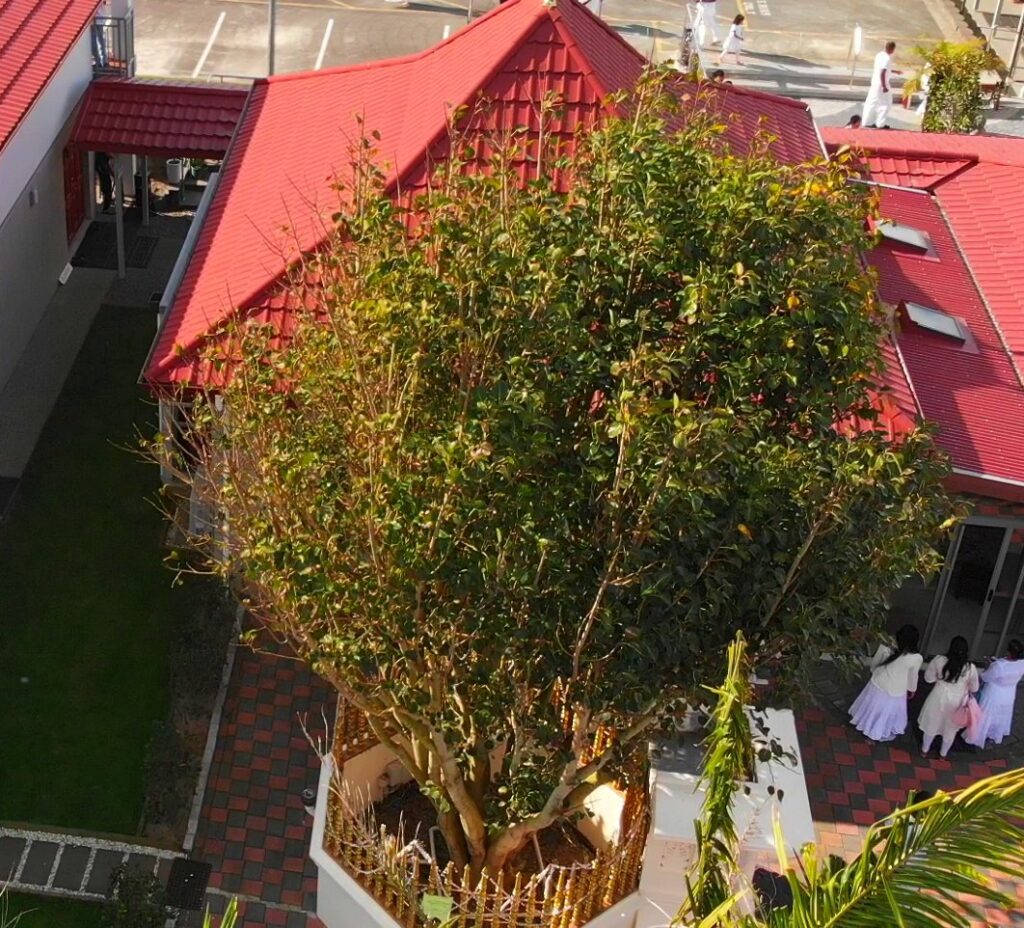Devotees of Sri Lankaramaya are very fortunate to have the services of four resident venerable monks to attend to their religious needs away from home. Although our resident venerable monks are always willing to accommodate to fulfil their needs to best of their wishes, NZSLBT appreciates if devotees make contact as appropriate well ahead of time to discuss the availability of the dates preferred.
- Pirith Chanting ceremony
- Buddhist Services at funerals
- Alms Giving (Danaya)
- Bodhi Puja
Pirith Chanting Ceremony
Pirith or (Paritta) is a collective term denoting a set of protective chants sanctioned by the Buddha for the use of both lay men and Bhikkus. Pirith chanting is a very popular ceremony among the Buddhists of Sri Lanka. The term ‘paritta’ implies protection. The ceremonial recital of Buddhist stanzas is regarded as capable of warding off all forms of evil and danger (vippaththi) including evil influences of the planets, evil spirits etc. In addition to curative and positive aspects, pirith is also chanted for the attainment of general success (Sampatti sidi).
As practised at Sri Lankaramaya, devotees invite monks to chant pirith in their homes to invoke blessings mostly relating to an important event such as house warming ceremonies, blessing new born babies etc. Pirith Chanting is also practiced as a part of religious proceedings at Sri Lankaramaya amongst various other programs. In particular, a weekly chanting of Dhamma Chakka Pavattana Sutta is a part of the regular program at Sri Lankaramaya. Please click on Events for a detailed calendar.

Buddhist Services at funerals

Re-birth being the doctrine of Sansara, Buddhists regard death as an event of high significance, both in the case of the deceased as well as the living. For the survivors, death is a powerful reminder of the Buddha’s teaching on impermanence. It also provides an opportunity to help the demised to find his way to a better existence in the next birth. Both these aspects of death find expression in the Buddhist funeral rites practised in Sri Lanka.
Monks at Sri Lankaramaya extend a benevolent service during funerals by participating in various religious rites and rituals and also delivering sermons or discourses highlighting the impermanence of life. The Dhamma delivered by the monks minimizes the feeling of loss and the great sorrow that the family members undergo. The Buddhists find consolation and comfort through the advice and understanding of the true nature of life through Dhamma, reminded by the monks. The term ‘pansakula’ means the offering of white cloth to monks by the immediate relatives of the dead as a part of the rituals during the funeral proceedings.
The Mathaka Bana is a discourse delivered by a monk mainly for the benefit of the dead. Usual practice is to have this sermon within seven days from the death. Please contact the Chief Incumbent Thero for further information on services.
Alms Giving (Danaya)
There are multitude forms of dana (giving) which are practised by Buddhists. Sanghika dana (giving to Sangha) is one of the main forms of dana. This is a century long tradition of Buddhists to fulfil the day-to-day needs of the Sangha (monks). These may include provision of facilities in terms of food, medicine, clothes, and accommodation for the monks.
Offering food (Heel dana – breakfast & Dahaval dana – lunch) and drinks (Gilanpasa) to monks is a widely practised Sanghika dana. Dayakas may choose this day to coincide with a day of importance to them, such as a family commemoration or birthdays etc. Associated with this, is the invoking of blessings for the dwelling and the family during these proceedings. As practised at Sri Lankaramaya, an elaborated form of this dana is to invite a few monks to the home of a laity and make the offerings there. This is a common occurrence in respect of the dayakas of Sri Lankaramaya, and it is usual to have the participation of friends and relatives to make it a collective act. A dayaka may prefer to make dana offerings at the temple premises, in which case the dayaka will discuss the logistics with the Chief Incumbent Thero . If the participation is expected to be wider, the facilities such as the Community Hall, the Kitchen and other amenities may be used subject to the Hall Hire & Use – Terms & Conditions .
If you wish to make an offering (danaya) on a day of your own choice, please contact the Chief Incumbent Thero in advance to reserve a date.

Bodhi Pooja

It was about 2550 years ago; Prince Gauthama Siddhartha attained enlightenment and became The Buddha under a Bo Tree. After being deep in meditation for years, he attained enlightenment when he realised the answer to the fundamental questions about why suffering existed in the world and how it could be eradicated. Since then, Bo tree (Ficus religiosa) has become a symbolic of Buddhism and an essential part of any Buddhist temple.
The veneration of the Bodhi-tree (pipal-tree: ficus religiosa) has been a widespread religious ritual among Buddhists, especially in Sri Lanka, starting from the time the Sri Maha Bodhi sapling was brought to the island by Theari Sangamitta. The sapling was from the original Bodhi-tree at Buddhagaya, in India, under which the Buddha attained Supreme Enlightenment. It was planted in Anuradhapura, known to be the oldest kingdom in Sri Lanka in the 3rd century BC, during the time of king Devanampiyatissa. The Bodhi tree is known as the Sri Maha Bodhiya.
Since then the Bodhi-tree has been a necessary feature of a Buddhist temple. In keeping with tradition, a Bodhi-tree has been planted and venerated at Sri Lankaramaya in Auckland, New Zealand as well. A special Bodhi-Pooja can be arranged in connection with any day of importance or an event to invoke blessings. A date* can be reserved by contacting the Chief Incumbent Thero.


